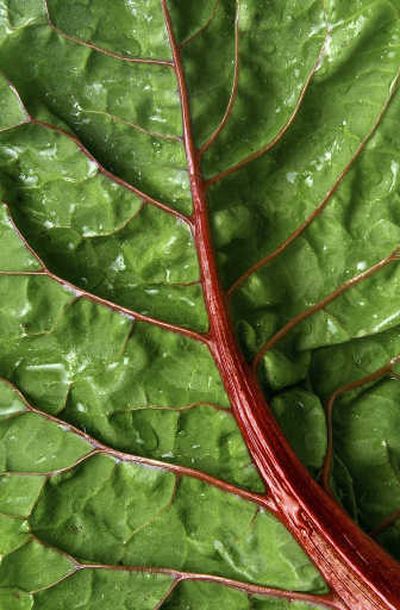Grow your greens

In our final look at cool-season crops, let’s focus on spinach, Swiss chard and broccoli. Unfortunately, all three are susceptible to insect attacks, but don’t let that dissuade you from growing them because we have some effective, safe weapons in our arsenal.
Spinach and Swiss chard
There are many similarities between growing spinach and Swiss chard. Both get planted directly into the garden as early as the soil can be worked. Plant the seeds ½ inch deep in rows or blocks. They should be thinned 4 to 6 inches apart. Both are susceptible to leaf miners, which are worms that tunnel between the leaf layers, so they should be grown under a floating row cover to keep the adult flies out.
A floating row cover is a lightweight fabric that acts as an insect barrier while letting in light, air and water. Lay it loosely on a bed, preferably over hoops to allow for plant growth, and weigh down the edges with boards or bricks. A floating row cover can be purchased at larger garden centers or through mail-order catalogs.
Once the weather gets quite hot, spinach will bolt, which means the plant will send up a flower stalk and set seed, so be sure to harvest spinach early in the season. Both spinach and Swiss chard should be harvested by picking individual leaves rather than whole plants, so they will continue to produce more leaves.
Reliable spinach varieties include Bloomsdale Longstanding and Indian Summer. For a change of pace, there’s also New Zealand spinach, which really isn’t spinach at all. I’m not sure how it got its name. It is planted after the danger of frost is past. Because the seeds have hard shells, they must be soaked in water for several hours before planting. The leaves are more succulent than regular spinach and are tasty when steamed and served with butter and lemon juice. New Zealand spinach tastes similar to regular spinach, doesn’t get attacked by insects and loves the heat.
Fun varieties of Swiss chard include Bright Lights, with rainbow-colored leaves, and Rhubarb, with red stems and dark green leaves.
Broccoli
Broccoli can be started indoors or outdoors from seed or from seedlings sold in nurseries. If starting them from seed, they need to be planted indoors five to seven weeks before our last frost, which usually is in mid-May. Plant the seeds ½ inch deep. Once they are planted out in the garden, they should be spaced 12 inches apart. I usually plant mine in a zig-zag pattern, which is a sneaky way to plant them a bit closer.
Broccoli is susceptible to two insects, aphids and cabbage loopers. Aphid outbreaks can be treated with insecticidal soaps, which are safe for humans. Be sure to follow the directions on the label. Cabbage loopers are green inchworms that are the larvae of white cabbage butterflies. They can be sprayed with Bt, Bacillus thuringiensis – bacteria that are safe for humans but deadly to the caterpillar stage of insects.
To avoid these two insects, broccoli should be grown under a floating row cover. The fabric is lightweight enough that it will lift up with the plants as they grow taller. The end result will be the most beautiful heads of broccoli you’ve ever grown, with no hidden “protein” inside, if you get my drift. After the main head of broccoli has been harvested, the plant will send up smaller side shoots that are just as tasty. Good varieties to grow include Munchkin and Packman Hybrid.